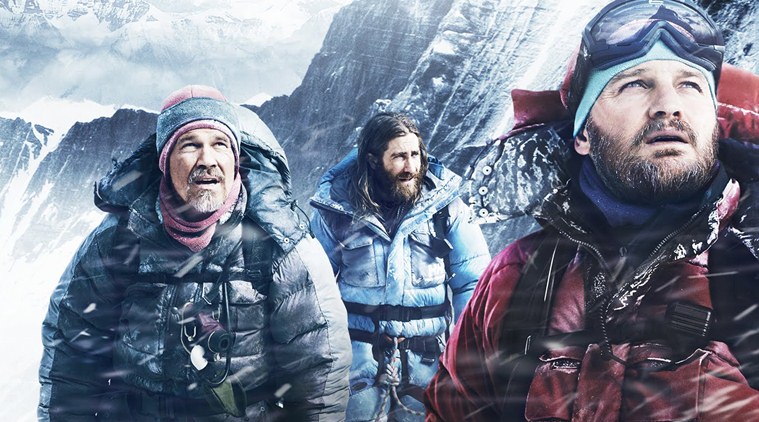Everest movie review: The film is shot beautifully, and in 3D, the dips and highs of the glorious peak are eminently watchable.
THE biggest star of this film is the world’s highest peak, as it should be. The script inspired by several accounts (including Jon Krakeur’s bestseller, Into Thin Air) of what happened atop that mountain on the fateful days of May 10-11 1996 — resulting in the highest number of casualties Everest had seen in one day till then, 8 — is clear that surmounting Everest is about endurance above all else. Everest throws everything the way of the climbers, from storms and avalanches to treacherous ice falls and mind games, and by the time you get up there, it is time to come down.
However, at the heart of any adventure lie stories of the men and women who embark on it. Kormákur’s challenge lay in making these worth the Everest, and it is here that the film limply fails. Apart from worrying wives back home (a horribly misused Knightley and Wright), almost none of the climbers here — some legendary, other novices, almost all brave — get any context about what brings them to conditions “not meant for the living”.
A journalist for Outside magazine who is also climbing with the mountaineers as part of a story, Krakeur (Kelly), even asks them helpfully “Why?”. But nobody has any real answers. Perhaps the only actor who stands out as a character is mailman/carpenter Doug, and that is largely on the strength of Hawkes’s acting, who makes even a mushy tale about schoolchildren a real motivator.
Clarke plays Rob Hall, the tour leader who has earned a name for conducting successful Everest expeditions. There is a hint of a rivalry here with more upstart contenders, but Clarke’s valiant efforts can’t make Hall rise above being a heroic, one-dimensional figure who says repeatedly that he is there not just to take his team up but to bring them down safely. And then there is Gyllenhaal, the other, less-successful team leader, who is more ‘cool, laid-back, high-on-something’ Gyllenhaal than Scott Fischer.
Still, they fare better than the others, especially the only woman climber, Yasuko from Japan, and Brolin as Beck, who hovers just on the edge of getting a hold on his character.
The film is shot beautifully, and in 3D, the dips and highs of the glorious peak are eminently watchable. Shot partly in Nepal, and partly at the Alps, it tries to make each of the halts on way to 8,848 m (or rather 29,029 feet, here) count – be it the Camps, the Balcony, the South Summit and Hillary’s Step. How precarious near traffic jams on that Step could be – as famously happened in May 2012 — is terrifyingly evident.
Cleary Kormákur has read those stories, as well as on the trash left by humans even on one of the world’s most inaccessible spots. But like the sherpas who only hang on the tangents of these stories – despite providing the steps (literally) for others to rise to the top — these aspects are never fleshed out.
One such sherpa, Lopsang (played by Pemba Sherpa), packs the best punch-line of Everest. Asked if he speaks English by Beck, he shoots back, while barely giving Beck a glance, “Better than you, you American”.
Is Lopsang saying what we think he is? Because, it’s there.
Cast: Jason Clarke, Jake Gyllenhaal, Josh Brolin, John Hawkes, Michael Kelly, Emily Watson, Keira Knightley, Robin Wright, Sam Worthington
Director: Baltasar Kormákur


